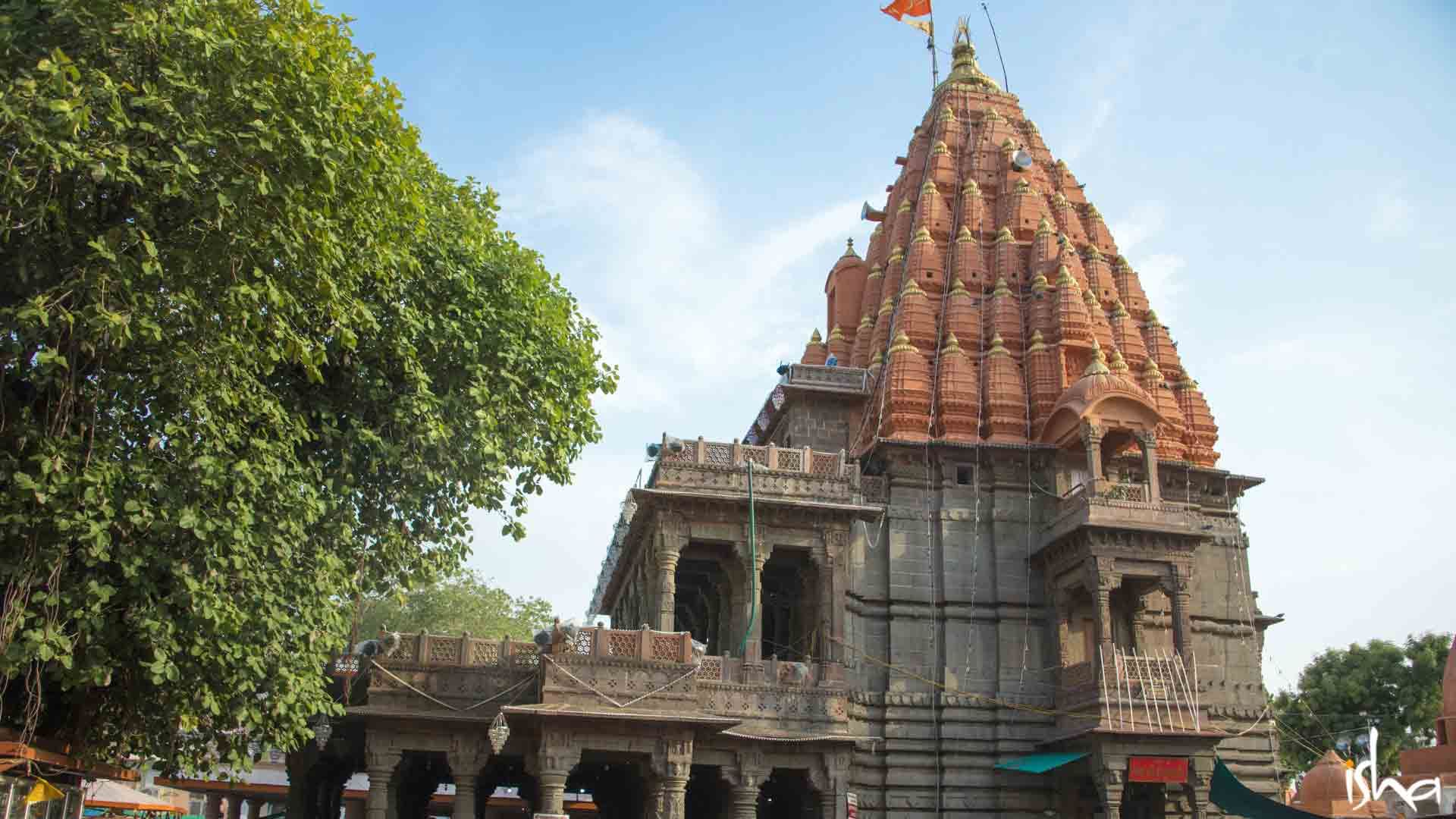The Timeless Presence of Mahakaleshwar – Ujjain Kumbh Mela
A resident of the Isha Yoga Center describes her experience of travelling to Ujjain for the Simhastha Kumbh Mela.

A few of us from the ashram had the opportunity to join over a thousand people from across Tamil Nadu, and take Isha’s special train to the Simhastha Kumbh Mela in Ujjain. And what a blessing it was!
There is a story to be told about our Special Train: it's idiosyncratic rhythm – long, stuffy-hot pauses, unpredictable stops and silent starts (when we would have to make a run for the doors, bundling our less agile co-passengers on before making the jump ourselves), and it's final arrival in Bhopal around 2 AM – 20 hours later than scheduled. Similarly, the twenty-one buses taking us from Bhopal to Ujjain and back again: the unexplained long wait (till 3:45 AM) to depart Bhopal, the oddly small seats, the break downs, the buses getting lost and taking roundabout routes.
There is a story of a thousand-plus people who waited gracefully through all this, without a murmur of complaint.
And then there's the story of the chanting, the drums and dancing, and the delicious meals lovingly prepared and served to us on the train and in Ujjain.
Subscribe
There's also the story of the volunteers organising our stay in Ujjain. How, with dedication and care, they created a site for us to stay. Only to have each of the hangars we were to sleep in successively destroyed by the extreme winds and rain that battered Ujjain prior to our arrival. When we arrived in Bhopal, they didn't even know where they would put us, but a school came to the rescue, allowing us to stay in their corridors, classrooms and grounds.
But these are not the stories to be told here. This is a story of Ujjain.
Once we were “released” from the bus, the pull of the Kshipra river and Mahakal meant my Malaysian friend was not in the mood to wait for anyone. Four of us strode after her, partly so she wouldn't disappear into the crowds alone, and partly because we were also all utterly determined to make best use of our 24 hours here. Hastening along the wide, dusty, tarmacked roads, past throngs of devotees, campsites and hoardings of Gods and Gurus, we made our way down to the river. Our first sight of the Kshipra was overwhelming. Tears welled up in my friend's eyes. The water was alive and utterly feminine. Descending the algae-clad steps, we immersed ourselves into her murky waters, yielding to all that she was.
Then to Mahakal. We climbed the approach to the temple, queuing alongside masses of pilgrims before being ushered inside. We wound our way along a wide passage down to the room at the threshold of Mahakal, and from there caught a glimpsed darshan as we moved across the room. The emptiness of this blackest-of-black abyss of a linga was somehow imprinted upon us.
Afterwards, we sat in the surrounds of the temple, bathing in the immense presence. We could have sat for days. It was such a potent, stillness-compelling space. Unfortunately, we had a bus to catch, and if we had lost sight of that, the temple security were anyway moving everyone on. We hurried to the Devi temple nearby to have darshan of an astonishingly humanesque and very alive goddess.
Searching for the route to the buses, we bumped into a group with some Isha brahmacharis, who told us not to worry about catching the bus and to follow them. We walked for some time through Ujjain's fascinating streets until we reached a lane where many Naga Babas were based. It was wonderful to walk past, witness and even interact with these haughty ash-clad yogis, a few of whom seemed to have a quite powerful presence.
The next day we went to have darshan of Kalabhairava. We queued for some hours in the heat of the day, our Isha group alongside pilgrims from Hindi speaking parts of India. We kept up the “Yoga Yoga Yogishwarya...” chant given by Sadhguru for the yatra and it was really delightful to see those queuing beside us, who had no connection with Isha, devotedly chanting along. After a glimpsed darshan of the immense Kalabhairava, we hurried down to the Kalabhairava Ghat where there was a small temple. For me, this was a very raw and powerful space. I could have sat here for quite some time if we had not needed to move on.
To conclude our trip to Ujjain, we headed off from the ghat to Matsyendranath's samadhi. Halfway along the route was the Mahakali temple, a piercing feminine presence attended to by young men with long flowing locks and striking eyes, looking more like archetypal yogis than priests. Then, following a long, scorching-hot, tarmacked track, we came to the samadhi. Sitting beside it, we basked in the somewhat familiar presence of the Guru.
To behold these different forms at the Simhastha Kumbh Mela whilst being steeped in Sadhguru's grace was something truly awesome and immense. Returning to the ashram, something seems lighter, perhaps emptied. It is beyond the realm of words. “Gratitude” seems meaningless, and even bowing down isn't enough.




